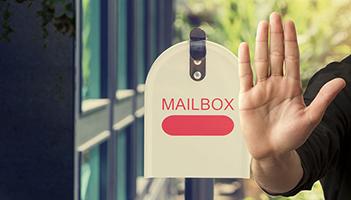Working in the email marketing industry I have often heard the term “feedback loop” thrown around casually. I myself have used it quite loosely with my clients, disregarding the fact that many email marketers are unaware of what feedback loops (or, simply put, FBLs) actually are and how they can affect their email marketing efforts.
This post is intended to give you a brief overview of what FBLs are, how they are implemented, and which Internet service providers (ISPs) offer them.
Every discipline has its own definition of “feedback loop.” Within systems, the definition is traditionally: “A feedback loop is system structure that causes output from one node to eventually influence input to that same node.” The concept has been around since at least the 1920s.
Within our area of concern, the email sending ecosystem, a feedback loop is a service offered by certain ISPs (not all) that sends complaints back to senders. These complaints generally originate from recipients of your email who have marked your messages as spam/junk. If you have signed up for an FBL, the mailbox provider will forward the message complained about back to you, the sender, at an email address you’ve assigned and set up expressly for this purpose.
This service offering is a great tool to help maintain proper list hygiene. We highly recommend that email marketers and senders utilize FBLs to maintain their lists and remove recipients and subscribers whenever there are complaints. This data gathered and returned from the FBLs is extremely valuable.
What if the recipient opted in?
Even if a recipient has previously opted in and/or expressly subscribed to receive your messages, if the user complains, the first thing you should do, as a considerate and legally compliant sender, is remove them from your active sending list and make certain not to mail to the recipient in future sends.
About complaint rate thresholds
Proactively removing the recipients/subscribers from your lists is not only beneficial in keeping your list clean, but it also reduces the risk of facing other issues with ISPs.
Most ISPs have complaint rate thresholds. If you as a sender go above these thresholds, you run the very real risk of all your emails getting blocked or your emails getting filtered out into missing or quarantined folders by ISPs. Unfortunately, they don’t publish these thresholds, which can vary by ISP. Therefore, removing these particular recipients that have complained will reduce future complaints and also reduce the risk of a sender getting blocked or their messages getting filtered out by ISPs.
Better insight into your campaigns
Suppressing these recipients will not only help with your engagement, but also give you better insight into the success of your campaigns. For example, if a particular campaign receives a high amount of complaints then a sender can gather that the content isn’t relevant enough for the recipients to keep receiving your mailing. Did you do an A/B test on the headline?
Email marketers can take this analysis even further by breaking their lists up into segments. For example, a sender can segment their weekly newsletters by age demographics.
As an example, let’s look at an online pharmacy that does regular newsletters. Yesterday’s newsletter was all about baby care products. Today our online pharmacy’s email marketers notice in their feedback loops that there is a high complaint rate for a particular segment – the age group of 50 and above. This obviously is telling the pharmacy that their content is not meeting this particular segment’s expectation and that the sender needs to adjust their content or stop sending to this group of recipients. (Of course, the pharmacy won’t understand what’s happening unless they’ve been smart enough to understand that age is a persona criteria for them, and wise enough to segment by personas.)
How to get a FBL
A sender must complete an application process to enable a feedback loop with a Mailbox Provider. Most Mailbox Providers that offer feedback loops will have a postmaster site where senders can sign up for a FBL. Some of the basic requirements when applying for a FBL are contact information, having an IP and domain, as well as an email address set up to receive the complaint messages. Other Mailbox Providers/ISPs may have additional requirements like authentication with DKIM, which is one of Yahoo!’s requirements.
Here’s a list of the top feedback loops available to senders:
- AOL
- Comcast
- Cox
- Earthlink
- Fastmail
- Gmail (available only to ESPs, so check with your vendor)
- Hotmail
- OpenSRS/Tucows
- Outblaze
- Rackspace
- RoadRunner/Time Warner Cable
- Terra
- NET
- United Online/Juno/Netzero
- Yahoo!
- com
Word to the Wise offers a more encompassing list, and also has links to individual postmaster sites and FBL signup pages.
